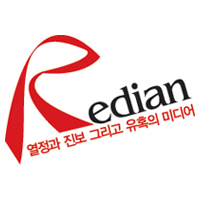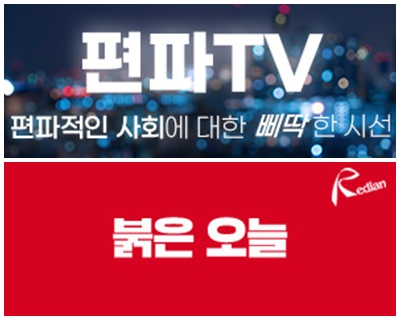굴욕도 이런 굴욕이 있을 수가 없다. 졸속도 이런 졸속이 있을 수가 없다. 협정문의 점 하나 고칠 수 없다더니 결국 재협상까지 가면서 그나마 최대 성과라고 평가했던 자동차 부문을 송두리째 양보했다. 그런 가운데 미국 정부가 3일 타결된 한미 자유무역협정(FTA) 재협상 결과를 일방적으로 발표해 논란이 확산되고 있다.
김종훈 외교통상부 통상교섭본부 본부장은 3일 기자회견에서 "양측 대표단은 금번 회의 결과를 자국 정부에 각각 보고하고 최종 확인을 거쳐 공식 발표할 예정"이라고 밝힌 바 있다. 그런데 미국 정부가 4일 일방적으로 무역대표부 홈페이지에 협상 결과를 공개해 버렸다. 연합뉴스 등에 따르면 미국 정부는 백악관에서 언론 브리핑까지 가진 것으로 알려졌다.
김 본부장을 비롯해 상대방 대표단이 비행기를 타고 돌아오는 도중에 이처럼 일방적으로 협상 결과를 공개한 것은 심각한 외교적 결례가 아닐 수 없다.
 |
||
| ▲지난달 11일 열린 야5당 대표 및 의원들의 한미FTA 재협상 규탄대회.(사진=정상근 기자) | ||
가뜩이나 우리나라는 굴욕적인 재협상을 했다는 국민들의 거센 반발에 직면한 상황이다. 미국 정부가 자신들에게 유리한 결과를 내세워 서둘러 여론 몰이에 나서면서 우리 정부의 입장이 더욱 곤혹스럽게 됐다. 청와대는 4일 성명을 내고 "공개된 자료는 추가협상 타결 내용 중 일부분"이라며 "우리 정부 발표를 보면 그렇지 않다는 것을 알게 될 것"이라고 해명했다.
미국 정부가 공개한 협상 결과에는 이미 알려진 대로 한국산 승용차에 대해 미국 측이 물리는 2.5%의 관세철폐 기한을 5년으로 연장하는 내용이 포함돼 있다. 기존 협정문에는 배기량 3천CC 이하 승용차는 협정 발효 후 즉시관세를 철폐하고, 3천CC 초과 승용차는 3년 내에 철폐하기로 돼있었다.
또한 한국에서 판매되는 미국 자동차 가운데 미국의 안전기준을 통과했을 경우 자가인증을 허용하는 연간 판매대수를 기존 6500대에서 2만5000대까지 4배나 상향조정하기로 했다. 우리나라의 경우 당초 FTA 협정 발표 즉시 미국산 승용차에 대해 부과해 온 8%의 관세를 철폐하기로 했었지만, 이번 협상에서 4년 동안 4%로 낮춘 뒤 5년째 완전 철폐하도록 했다.
10년간 철폐키로 했던 미국산 전기차와 하이브리드차에 대한 관세도 4년 동안은 4%로 낮추고, 5년째 모두 철폐키로 했다. 적어도 자동차 부문만 놓고 보면 미국의 요구를 전폭적으로 수용한 반면 우리나라는 파격적인 양보를 한 셈이다. 이미 4년 전에 타결된 협정을 이렇게까지 양보하면서 재협상을 했어야 했느냐는 비난이 나올 수밖에 없는 상황이다.
정부는 그동안 농업과 축산업, 금융, 서비스 부문에서 일부 피해가 불가피하지만 자동차 부문에서 크게 유리하다며 한미 FTA의 필요성을 강조해 왔다. 그러나 이번 재협상으로 이런 명분까지 사라지게 됐다. 불평등·굴욕 협상이라는 비난과 함께 향후 국회 비준 절차가 결코 순탄하지 않을 것으로 전망된다.
김 본부장은 자동차 관련 분야를 양보한 대신 축산물과 의약품 분야에서 미국의 양보를 얻어냈다고 언급했으나 크게 의미있는 성과는 아닌 것으로 보인다. 유일하게 내세울 수 있는 성과라면 쇠고기 부문 추가 개방을 막은 것 뿐인데 이 역시도 국민들을 설득시키기에는 감동이 부족하다고밖에 할 수 없다.
결국 거슬러 올라가면 이런 굴욕적인 재협상 결과는 지난 3월 천안함 침몰 사고 이후 최근 연평도 폭격 사건 등을 거치면서 종속적인 한미 관계의 결과라고 할 수 있다. 일부에서는 항공모함 출동 대가를 너무 비싸게 치른 것 아니냐는 지적까지 나오고 있다. 미국의 눈치를 보면서 국민들을 속였다는 비난에서도 자유롭기 어려울 것으로 보인다.
한편 미국 의회 일정 등을 감안하면 내년 상반기에도 비준이 어려운 상황이고 내년부터 본격적인 이명박 정부 집권 후반기에 진입하면 자칫 한미 FTA 비준이 장기화되거나 영구 미제로 남게 될 가능성도 배제할 수 없는 상황이다. 한미 FTA를 계기로 경제 성장을 최대 성과로 가져가려던 이명박 정부의 계획도 오리무중이 됐다.
아래는 USTR이 공개한 관련 협정 내용 전문. 출처는 http://www.ustr.gov.
INCREASING ACCESS TO KOREA’S AUTO MARKET TO EXPAND U.S. EXPORTS AND SUPPORT JOBS HERE AT HOME
◇Automotive Safety Standards: Safety standards have effectively operated as a non-tariff barrier to U.S. auto exports. The 2010 supplemental agreement announced today allows for 25,000 cars per U.S. automaker – or almost four times the number allowed in the 2007 agreement — to be imported into Korea provided they meet U.S. federal safety standards, which are among the most stringent in the world.
◇Automotive Environmental Standards: To avoid unfair burdens on automakers while maintaining high standards for environmental protection, major trading nations provide reasonable flexibility on environmental standards for small-volume vehicle importers. Under the 2010 supplemental agreement, all U.S. autos will be considered compliant with new Korean environmental standards on fuel economy and greenhouse gas emissions, developed since the 2007 agreement, if they achieve 119 percent of the targets in these regulations. This provision helps American automakers sell their cars affordably in Korea without undermining Korea’s environmental objectives.
◇Taxes: In the 2007 agreement, Korea committed to reduce tax rates for American cars and to streamline current taxes based on engine size, which have tended to raise the cost of the typically larger size of American vehicles sold in Korea. Under the 2010 supplemental agreement, Korea has agreed to additional transparency in this area.
◇Transparency: The 2007 agreement prohibits Korea from adopting new automotive regulations that create unnecessary barriers to trade, and establishes an early warning system for potential trade barriers. The 2010 supplemental agreement makes two important additions for significant regulations: creating a 12-month period between the time a final regulation is issued and the time auto companies must comply with it, giving companies sufficient time to adjust; and requiring Korea to develop a new review system within 24 months of entry into force to make sure that existing auto regulations accomplish their objectives in the least burdensome manner possible.
LEVELING THE PLAYING FIELD BY GIVING U.S. AUTOMAKERS AND WORKERS THE OPPORTUNITY TO TAKE ADVANTAGE OF INCREASED ACCESS TO KOREA’S MARKET
◇Car Tariff Elimination: The 2007 agreement would have immediately eliminated U.S. tariffs on an estimated 90 percent of Korea’s auto exports, with remaining tariffs phased out by the third year of implementation. The 2010 supplemental agreement keeps the 2.5 percent U.S. tariff in place until the fifth year. At the same time, Korea will immediately cut its tariff on U.S. auto imports in half (from 8 percent to 4 percent), and fully eliminate that tariff in the fifth year.
◇Truck Tariff Elimination: The 2007 agreement would have required the United States to start reducing its tariff on Korean trucks immediately and phase it out by the agreement’s tenth year. The 2010 supplemental agreement allows the United States to maintain its 25 percent truck tariff until the eighth year and then phase it out by the tenth year – but holds Korea to its original commitment to eliminate its 10 percent tariff on U.S. trucks immediately.
◇Tariffs on Electric Cars: In the 2007 agreement, the United States and Korea would have eliminated tariffs on electric cars and plug-in hybrids by the tenth year of implementation. Under the 2010 supplemental agreement, Korea will immediately reduce its electric car tariffs from 8 percent to 4 percent, and both countries will then phase out their tariffs by the fifth year. This is a concrete step toward achieving President Obama’s goal of supporting America’s green technologies.
MORE SAFEGUARDS FOR AMERICA’S AUTO INDUSTRY SUSTAIN JOBS HERE AT HOME
◇Special Motor Vehicle Safeguard: The 2007 agreement contained no safeguard specific to the U.S. auto industry. Under the 2010 supplemental agreement, Korea has committed to add a special safeguard for motor vehicles to ensure that the American auto industry does not suffer from any harmful surges in Korean auto imports due to this trade agreement.
Additional rules strengthen this auto safeguard. In the 2007 agreement, the general safeguard protections against harmful product surges ended in the agreement’s tenth year. Under the 2010 supplemental agreement, the special auto safeguard is available for 10 years beyond the full elimination of tariffs for each Korean auto product.
Under this motor vehicle safeguard, the U.S. government is not required to offer Korea tariff reductions or other compensation – generally required when a safeguard is applied ? for up to two years after this particular safeguard is applied. The special motor vehicle safeguard can be applied more than once per particular auto product if more than one surge causes serious damage to U.S. production of that product.
The higher tariffs of the special motor vehicle safeguard can be applied to a particular product for as long as four years, instead of three years as in the agreement’s general safeguard. There is no requirement for the U.S. to progressively re-lower tariffs while the special motor vehicle safeguard is applied. Fewer procedural steps are required to speed up the application of the safeguard when workers need faster relief.
◇Enforcement: The 2007 agreement creates a tough remedy for the United States to re-impose as much as $200 million in U.S. tariffs (i.e., “snapping back” to pre-agreement levels) on Korean passenger cars if U.S. auto business in Korea is materially affected by Korean violations of the agreement. The 2010 supplemental agreement substantially increases Korea’s obligations in a number of areas subject to this strong enforcement mechanism.












페이스북 댓글